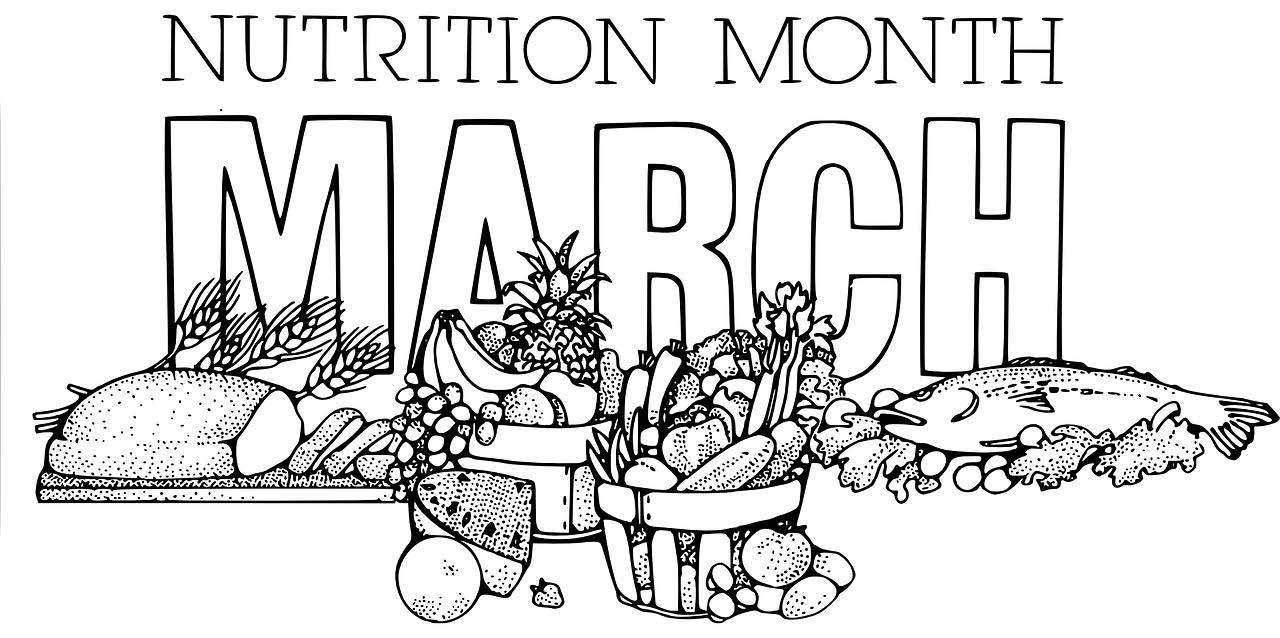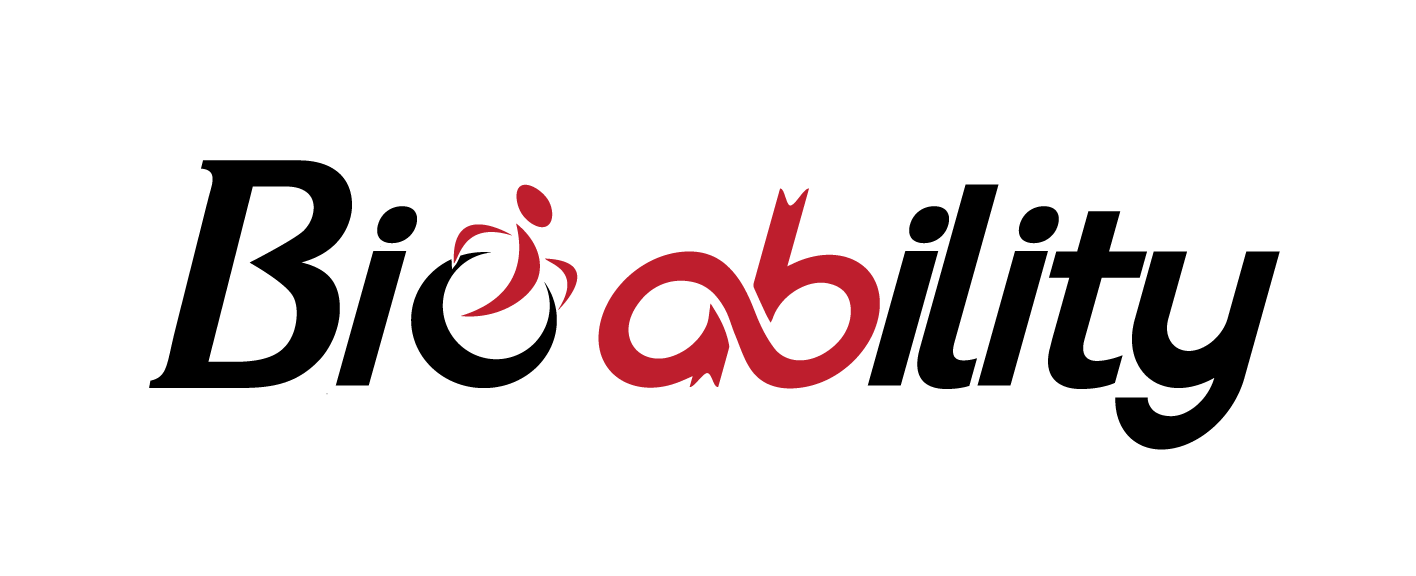March 1, 2023
The Ability Connection
Issue #6

March is National Nutrition Month!
Improving your diet is a very common goal to have when you want to become
healthier. But what does this mean? It may mean different things to different people. First, we need to know what defines a healthy diet then we can determine where we fall short. Building a healthier eating routine is a
great place to start. According to the NIH, a healthy eating plan:
- Emphasizes vegetables, fruits, whole grains, and quality dairy products
- Includes lean meats, poultry, fish, beans, and eggs
- Limits trans fats, sodium, and added sugar
- Controls portion sizes
Why is this important? A healthy eating plan gives your body the nutrients it needs every day while staying within your daily calorie goal, whether that’s weight loss or maintenance. A healthy eating plan will also lower your risk for heart disease, diabetes, and other health conditions.
Choose a variety of nutrient dense foods that you enjoy from each food group. Include a rainbow of colors of fruits and vegetables in your diet. Include whole grains such as oatmeal, brown rice or whole grain bread. Build your meals around your protein source (like poultry, seafood, eggs, beans, and lentils) to help keep your blood sugar within a healthy range.
Choose organic grass-fed dairy options when possible, such as milk or yogurt. Be sure to include healthy oils in your diet like olive, avocado and coconut oils. Check nutrition labels for added sugars, sodium, and oils from seeds, palm, safflower, or soybeans, and try to limit these.
Think of one or two small areas you can improve and make small changes. These add up to a healthier diet over time. Our monthly recipes are a great place to start. Schedule a consultation with us today to help build a nutrition plan that best suits your goals.
March 1st is International Wheelchair Day
March 1st is International Wheelchair Day. First launched in 2008, International Wheelchair Day is celebrated every March 1 for wheelchair users to celebrate the positive impact their wheelchair has had on their lives. However, it is important to note that approximately 3 million people rely on a wheelchair every day and accessibility issues continue to keep them from seeing much of the world.
Bio Ability strives to be an advocate in our community for accessibility. Our vision is to one day build a universally designed complex of facilities and services not just “accommodating” or “accessible” to people with disabilities, but specifically designed for their therapeutic, recreational, and special needs, inclusive of their families and the able-bodied public.
Staff Spotlight: Patrick Miller
Patrick Miller is a camp counselor working with the Bio Gymnastics after-school program and summer camps and will work with Bio Ability in this capacity as well. He is always smiling, and his smile lights up a room. Patrick is currently studying to be a member of our team for the Adaptive Fitness program at Bio Ability.

Muscle groups of the Month: shoulders and arms
Due to the increased work demand of the shoulders and arms, wheelchair users often have shoulder pain and dysfunction. Most wheelchair users consistently use their upper body, particularly the triceps and the shoulders, for movement, which puts extra strain on the joints and muscles. To prevent injury, it’s important to avoid imbalances by strengthening the muscles of the back and stretching the muscles of the chest.
Here are some effective exercises:
- Hand cycling: This exercise is great to loosen up and warm up the muscles we will be working. It is also a great cardio workout if done longer. For a warm-up cycle for 8-10 minutes.
- Shoulder Openers: Hold a stick or broomstick overhead with hands about 6 inches apart. Keeping your arms straight, continue behind your head until you feel a stretch. Hold for 5-10 seconds and do 10 repetitions.
- Lat Pull Downs: Use a resistance band anchored 3-4 feet overhead. Position yourself underneath and slightly in front of the band. Hold a handle in each hand or each end of the band if no handles. Pull down towards you while squeezing your back muscles. Hold for a few seconds and release allowing the band to return upward slowly. Start with 10 repetitions.
- Reverse Fly: Use a resistance band anchored in front of you at shoulder level. Hold a handle in each hand or each end of the band if no handles. Pull each hand out to the side with the palms facing forward. Focus on squeezing your shoulder blades together in your back with reach repetition and holding for a few seconds. Complete 10 repetitions.
Injury prevention is one of the many great effects of regular exercise. The above exercises are a great place to start! If you are looking to dive deeper in your fitness journey, reach out to us for a consultation and we can help you build a custom workout plan.
Recipe of the Month: Quinoa with Spinach, Tomatoes and Walnuts
Ingredients 1 cup quinoa
1 cup quinoa
2 tablespoons extra virgin olive oil
1 garlic clove, minced
2 cups water (or use low sodium vegetable or chicken broth)
6 ounces fresh baby spinach
1 cup grape tomatoes
½ cup walnut pieces, raw
½ cup Parmigiano-Reggiano cheese, freshly grated
Torn fresh basil leaves (optional garnish)
Directions
- Place quinoa in a small bowl, add water to cover, and swish to rinse. Pour into a fine mesh strainer and drain well (it’s important to rinse quinoa).
- Heat oil in medium skillet. Add quinoa. Toast, stirring, over medium heat until golden, about 10 minutes. Add garlic and cook, constantly stirring for 1 minute. Add water and heat to a boil. Cover over medium heat and let cook until water is absorbed, about 15 minutes.
- When quinoa is cooked, add spinach and tomatoes directly to skillet. Stir-fry over medium heat until spinach is almost wilted and tomatoes are warmed, about 1 minute. Stir in walnuts and cheese.
- Garnish with basil leaves. Serve warm. Makes 5 servings.
Nutrition facts:
Serving size: 1 Cup
Calories: 340; Total Fat: 19g; Saturated Fat: 3g; Trans Fat: 0g; Cholesterol: 10mg; Sodium: 270mg; Total Carbohydrate: 30g; Dietary Fiber: 12g; Sugars: 3g; Protein: 13g; Vitamin A: 30%; Vitamin C: 15%; Calcium: 20%; Iron: 20%

